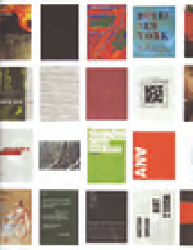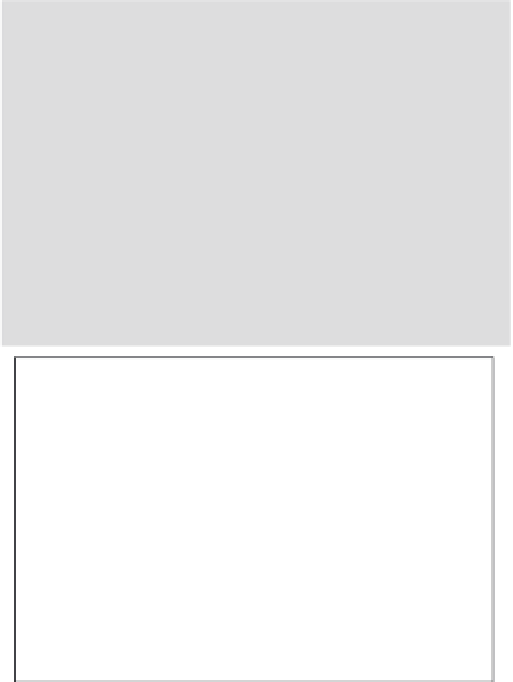Graphics Reference
In-Depth Information
MODULAR GRIDS
When is the adoption of a modular grid more
desirable than the standard columnar grid?
Though these two methods for organizing
information are cousins, the modular grid
offers opportunities to present more complex
information with a high degree of accuracy
and clarity.
Modules are formed by the intersections
of horizontal and vertical lines. These
units provide zones for the placement of
different parts of information. The goal is to
create a distinct hierarchy between units of
information. This is achieved by understanding
the different levels of information and
representing them as contrasting elements.
At first, the modular grid appears
mathematical, repetitive, and unimaginative.
But it is important to think of the grid as a
system for organizing information and not
as a physical, impenetrable fortress. Grid
systems are flexible, and they evolve as the
designer works to understand and represent
information. Figure
4-27
displays a modular
grid system consisting of thirty-six square
modules. This example shows modules of
equal size, but grid systems can be developed
with modules consisting of any number of
proportions. The beauty of the system is that
modules can be combined into varied sizes and
shapes to serve as zones for content elements.
As a general rule, the more complex
the grid structure, the more flexible the
organizational possibilities. The process of
organizing material within a grid structure
is a balancing act between variety and
unity. Too much variety deprives design of
hierarchical clarity, and too much unity can
become monotonous for the reader.
4-25
In a book entitled
The Best Dutch Book
Designs
, text columns
shift laterally to achieve
a woven texture. The
columns are assigned
texts in both Dutch
and English. (Designer:
Typography, Interiority,
& Other Serious Matters)
4-26
For the
One Hit
Wonders
exhibit in the
Rock and Roll Hall of
Fame and Museum
in Cleveland, Ohio,
multiple columns
featuring song titles,
artist's names, and
descriptive text arch
dramatically along a
curved wall to achieve
both visual resonance
and maximum
interpretive clarity.
(Project directors: Bruce
Burdick and Susan
Burdick; Graphics
director: Stuart McKee,
The Burdick Group)

















